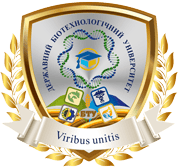Вплив занять верховою їздою на електричну активність головного мозку людини та коня
Анотація
В представленій роботі методом електроенцефалографії оцінювалась сумарна синаптична активність головного мозку людей та коней до та після занять верховою їздою. Аналіз енцефалограм 5-ти спортивних пар «вершник-кінь» показав, що заняття верховою їздою чинять на людей заспокійливий вплив, який супроводжується підвищенням індексу δ-ритму та зниженням β-ритму, в той час, як у коней після верхової роботи індекс δ-ритму знижується, а інші – підвищуються. При роботі на корді без вершника ці зміни у коней виражені більш суттєво.
Завантаження
Посилання
Althobaiti, T., Katsigiannis, S., West, D., & Ramzan, N. (2019). Examining Human-Horse Interaction by Means of Affect Recognition via Physiological Signals. Ieee access, 7, 77857-77867. DOI: 10.1109/ACCESS.2019.2922037
Bergamasco, L., Coetzee, J. F., Gehring, R., Murray, L., Song, T., & Mosher, R. A. (2011). Effect of intravenous sodium salicylate administration prior to castration on plasma cortisol and electroencephalography parameters in calves. Journal of veterinary pharmacology and therapeutics, 34 (6), 565-576. DOI: 10.1111/j.1365-2885.2011.01269.x
Chen, C. C., Crews, D., Mundt, S., & Ringenbach, S. D. R. (2015). Effects of equine interaction on EEG asymmetry in children with autism spectrum disorder: a pilot study. International journal of developmental disabilities, 61 (1), 56-59. DOI: 10.1179/2047387714Y.0000000044
Cousillas, H., Oger, M., Rochais, C., Pettoello, C., Menoret, M., Henry, S., & Hausberger, M. (2017). An Ambulatory Electroencephalography System for Freely Moving horses: An Innovating Approach. Frontiers in veterinary science, 4. DOI: 10.3389/fvets.2017.00057
Dmitrieva, N. V. (2015). Sistemnaya elektrofiziologiya: Sistemnyy analiz elektrofiziologicheskikh protsessov. Moskva: KD Librokom. [in Russian]
Drewnowska, O., Lisowska, B., & Turek, B. (2019). What Do We Know about the Use of EEG Monitoring during Equine Anesthesia: A Review. Applied sciences-basel, 9 (18). DOI: 10.3390/app9183678
Gorecka-Bruzda, A., Chruszczewski, M. H., Jaworski, Z., Golonka, M., Jezierski, T., Dlugosz, B., & Pieszke, M. (2011). Looking for an Ideal Horse: Rider Preferences. Anthrozoos, 24 (4), 379-392. DOI: 10.2752/175303711X13159027359827
Hall, C., Liley, С., Murphy, J., & Crundall, D. (2009). The relationship between visual memory and rider expertise in a show-jumping context. Veterinary journal, 181 (1), 29-33. DOI: 10.1016/j.tvjl.2009.03.007
Ille, N., von Lewinski, M., Aurich, C., Erber, R., Wulf, M., Palme, R. … Aurich, J. (2015). Riding Simulator Training Induces a Lower Sympathetic Response in Riders Than Training With Horses. Journal of equine veterinary science, 35 (8), 668-672. DOI: 10.1016/j.jevs.2015.06.018
Ippolitova, T. V., & Gauss, K. R. (2012). Usovershenstvovannye metodiki registratsii mnogokanal'noy elektroentsefalogrammy u cheloveka i zhivotnykh. Veterinarnaya meditsina, 1, 42-45. [in Russian]
Johnson, C. B., Young, S. S., & Taylor, P. M. (1994). Analysis of the frequency-spectrum of the equine electroencephalogram during halothane anesthesia. Research in veterinary science, 56 (3), 373-378. DOI: 10.1016/0034-5288(94)90155-4
Johnson, C. B., Bloomfield, M., & Taylor, P. M. (1999). Effects of ketamine on the equine electroencephalogram during anesthesia with halothane in oxygen. Veterinary surgery, 28 (5), 380-385. DOI: 10.1111/j.1532-950X.1999.00380.x
Kruljc, P., & Cestnik, V. (2003). Brain wave and electromyography responses to butorphanol during ketamine- and halothane-induced anesthesia in horses. Аcta veterinaria brno, 72 (1), 41-47. DOI: 10.2754/avb200372010041
Lewin, W., & Tonhardt, H. (1998). Non-invasive EEG-leading in the awake standing horse. Pferdeheilkunde, 14 (4), 285-294. DOI: 10.21836/PEM19980401
Rochais, C., Sébilleau, M., Menoret, M., Oger, M., Henry, S., Hausberger, M., & Cousillas, H. (2018). Attentional state and brain processes: state-dependent lateralization of EEG profiles in horses. Scientific Reports, 8, 1-7. DOI: 10.1038/s41598-018-28334-9
Sanchez Guerrero, M. J., Cervantes, I., Valera, M., & Gutierrez, J. P. (2014). Modelling genetic evaluation for dressage in Pura Raza Espanol horses with focus on the rider effect. Journal of animal breeding and genetics, 131 (5), 395-402. DOI: 10.1111/jbg.12088
Savel'eva, O. V., & Lebedeva, E. M. (2019). Ippoterapiya kak sredstvo netraditsionnoy reabilitatsii detey s DTsP. Olympus. Gumanitarnaya versiya, 1 (8), 89-92. [in Russian]
Vander Ree, M., & Wijnberg, I. (2012). A review on epilepsy in the horse and the potential of Ambulatory EEG as a diagnostic tool. Veterinary quarterly, 32 (3-4), 159-167. DOI: 10.1080/01652176.2012.744496
Visser, E. K., Van Reenen, C. G., Engel, B., Schilder, MBH., Barnveld, A., & Blokhuis, H. J. (2003). The association between performance in show-jumping and personality traits earlier in life. Аpplied animal behaviour science, 82 (4), 279-295. DOI: 10.1016/S0168-1591(03)00083-2
Williams, D. C., Aleman, M., Holliday, T. A., Fletcher, D. J., Tharp, B., Kass, P. H. … Le Couteur, R. A. (2008). Qualitative and quantitative characteristics of the electroencephalogram in normal horses during spontaneous drowsiness and sleep. Journal of veterinary internal medicine, 22 (3), 630-638. DOI: 10.1111/j.1939-1676.2008.0096.x
Williams, D. C., Aleman, M., Tharp, B., Fletcher, D. J., Kass, P. H., Steffey, E. P. … Holliday, T. A. (2012). Qualitative and Quantitative Characteristics of the Electroencephalogram in Normal Horses after Sedation. Journal of veterinary internal medicine, 26 (3), 645-653. DOI: 10.1111/j.1939-1676.2012.00921.x
Переглядів анотації: 1130 Завантажень PDF: 878





